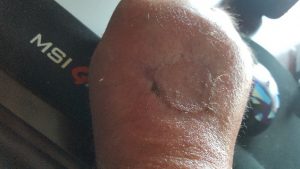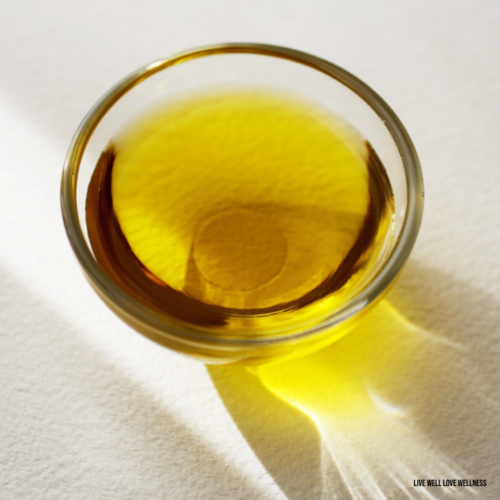Statin Dangers – Written by Sandy Muir
Sandy has been a work college of mine for many years teaching me everything I know about my career in asset management. For many years we worked with executives and managers in infrastructure businesses to teach them how to look after their infrastructure (roads, buildings, parks) in the best possible manner implementing long term strategies on how to maintain there assets well into the future to optimise their life span. The ironic thing about this is (and I never thought about it like this) that our number one asset is our body and our health can also be supported by preventative care. So now I teach, create awareness and educate people how to care for their greatest asset! Their body! And how to be in tune with what feels right and be mindful of what you are putting in your body so you don’t end up having a story like Sandy. Sandy is very lucky to still be alive! The medical system failed him in more ways than one! Thank you Sandy for sharing your story many people need to hear this as it is frightening the amount of people on cholesterol tablets without really understanding the statin dangers!
Before I begin to tell the story of a journey that has lasted some six months I must first tell you that April 2014 I had a stroke. This is important because as a result of the stroke I was put on some medicine that as it turns out is responsible for this journey of the last six months.
After the stroke I was put on blood pressure tablets, cholesterol tablets (even though I didn’t need it as I had a cholesterol reading of 4.1) and antidepressant tablets. The cholesterol tablets were Lorstat.
It took me approximately eight months to recover as best I could from the stroke and another 15 months before I was fit enough to begin workouts. Yes in my youth I competed in weightlifting and had a desire to at least be able to work out again as the stroke left me weak in my right hand and arm. In February this year I began working out and was doing quite well. I believed introducing some exercise into my life after the stroke was a good idea for me mentally and physically.
Around the start of April I began to feel cramps in my legs. Over a few days I lost strength in both legs to the point where I could not stand up from the couch and walking was extremely difficult. This continued on for approximately one week more and got progressively worse to the point where movement was impossible. At the same time I was feeling quite ill and began to throw up everything I ate. This got increasingly worse and the cramps and pain I had in my legs was rising up to my abdomen.
On Thursday of the second week I called a locum to come to the house to check on me as I was effectively immobile. His conclusion was that I was suffering from a reduction in electrolytes and told me to drink lots of fluids containing electrolytes.
On Saturday night I was being helped off the couch when I lost total strength and collapsed on the floor. I was in significant pain with extensive cramping. I decided that was it and had to call for an ambulance. To my surprise they asked me a series of questions based on the answers they said I was a low priority but with my problems they recommended I go to the hospital. I said how can I do that when I can’t walk? In fact the ambulance didn’t turn up at all.
I was in so much pain I decided to go to bed because there was no way at that point I could get into a car much less walk.
The next morning my wife had purchased a wheelchair from the chemist so I could get to the hospital. I was feeling a lot better but decided that I had to know what the problem was. We ordered a taxi that could take me to the hospital. I had an initial blood test and waited patiently for the outcome. To my surprise I was taken straight into intensive care. So much for low priority.
The doctor in ICU advised me that I had kidney failure and pancreas failure as well as blood readings that in his words ‘were all over the place’. In fact my potassium readings were 7.8 when safe levels are one. He then went on to mention that I shouldn’t even be alive as I should have had a massive heart failure. My kidneys were functioning at only 4% (the scary statin dangers).
The doctors then put a port in my neck in preparation for dialysis if need be. They also inserted a cannula in the back of my hand to inject the required fluids into my body. It took around 4 different nurses and multiple attempts by each to insert the cannula. This was to be the start of the next leg of my journey which will soon become evident.
For five days I lay in ICU as they worked to get my kidneys functioning again. During this time the pain was extensive as the kidneys worked hard to improve. At the end of the five days the doctor informed me that they had considered taking my gallbladder out if the kidneys hadn’t improved. A bit extreme I thought.
On day two in ICU the doctors noticed me that my right hand was swollen to the point that it looked like a small football on both sides. However no action was taken until I went into the Ward 3 days later.
At the end of the five days I was well enough to be placed in a ward but a long way from being clear of the problem. As I soon found out this would be a long term affair as the kidneys and pancreas slowly improved.
In the ward I was given antibiotics to repair the damage to my right hand. Unfortunately, I had a reaction to the antibiotics to the point where over a few days I had a rash from head to toe which behaved more like sunburn. During this time the infection from the cannula had travelled up my arm towards the shoulder. I was given an ultrasound to check that the infection had not moved into the chest but was then told that they had found a blood clot in my arm. What else could go wrong?
At the end of day 10 I was released from the hospital however, I still had to contend with slow healing kidneys, the infection in the right hand which by this time had opened up my skin to most of the back of my hand, the after-effects of the antibiotics, and now the blood clot.
I should also mention that during my time in hospital the cramps in my legs dissipated and with hesitation became mobile.
Now I was in for long-term meetings with the following sections of hospital:
• infectious diseases;
• haematology; and
• renal.
After a month my body cleared the after-effects of the antibiotics which eventually resulted in blisters on the front backs of my legs which left me with a lot of discomfort and the inability to move around once again.
After two months I was given the all clear with regards to my kidneys as they were functioning close to normal.
Unfortunately, through the numerous blood tests I was given, haematology found an abnormal protein in my blood. So it was off to x-ray my total body for suspect bone cancer. Thank God I was given the all clear from the bone cancer. The first bit of real good news I had received in three months.

Unfortunately during this time the infection in the back of my hand was getting worse and so I was sent to plastics to see what could be done. I was given numerous antibiotics in an attempt to heal the wound with the view to follow-up plastic surgery which occurred in August.
The initial part of plastic surgery was to clean out the back of my hand and remove dead skin and the infection down to my tendons. I was then placed on a vacuum pack for the next six weeks to accelerate the healing.

In late September I was given a skin graft as the wound had healed significantly. Thankfully the skin graft has taken and as of a few weeks ago I was discharged from hospital and will now be looked after by my local GP.
Throughout this ordeal I was faced with a lot of guesses from the doctors as to the cause of the problems and a lot of potential issues were raised which did not give me much confidence at all. In saying this however I am very grateful to the doctors who worked hard as it turned out to keep me alive.
I should mention that at the start of my journey I informed my GP that I had been constantly sleeping and in fact fell asleep while driving and ran off the road. I could not drive for longer than 30 minutes without pulling up the side of the road to have short naps. This to me was very unusual. I also asked him when I could come off the blood pressure and cholesterol pills and he informed me I would be on them for life. I felt very uneasy about staying on these pills for long-term as my body was not behaving as it should. It was only the week after this that my troubles began. The doctors finally conceded that the long-term effects of using Lorstat initiated my kidney failure.
I also found it amusing that the renal specialist wanted me to go back on the cholesterol pills, although a different kind despite my cholesterol at this time being 3.8. His reasoning was that the cholesterol readings could eventually rise. I informed him that I was uneasy about this as I had good readings and I would be changing my diet to ensure cholesterol readings would be maintained. I suggested that the cholesterol be monitored and if they rose we could look at an alternative treatment. Fortunately my GP agreed with me.
It is also interesting to note that in the two weeks while I was in hospital I was taken off the blood pressure pills and throughout this time my blood pressure was normal. In fact, my blood pressure only started to rise again three months after being in hospital for the first time. I’m now back on blood pressure tablets for the meantime but based on monitoring by the GP I now have the flexibility of coming off the tablets when my blood pressure is steady.
So what did I learn from all this?
1) Always listen to your body and act accordingly;
2) As a priority treatment, monitor the problem rather than relying on tablets as a first course of action;
3) Learn as much about the problem as possible as the doctors may not have all the answers;
4) Adopt a healthy lifestyle;
5) Look at alternative treatments after all it is your body; and
6) If you must be on tablets adopt a plan that allows you to avoid potential long-term effects.
Sandy




